Herons
Herons are large stately birds.
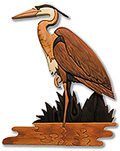 Intarsia of a Great Blue Heron by local artist, Gail Burton.
Intarsia of a Great Blue Heron by local artist, Gail Burton.
I don't remember herons around Kootenay Lake when I was a child; the first one I saw here was on the beach at Troup in the late 1970s, and so unusual was it that people set out in boats to see what this huge bird was. Although hardly an every-day sighting, it is not the least bit unusual to see one now.
Although Herons are usually migratory, they can be seen around Kootenay Lake all year round. During that time, they tend to be solitary except at mating time. They will stand for long periods in the shallows or on a piling, just watching for a good catch. Although the adult heron is tall (about 1.2 m) and has a large wingspan (about 1.8 m), it actually weighs much less than a turkey.
The contrast between the heron’s sinuous lines and its shaggy feathers makes for interesting pictures, and the bird’s languid approach to fishing makes for relaxed photography. The consequences fill this page.
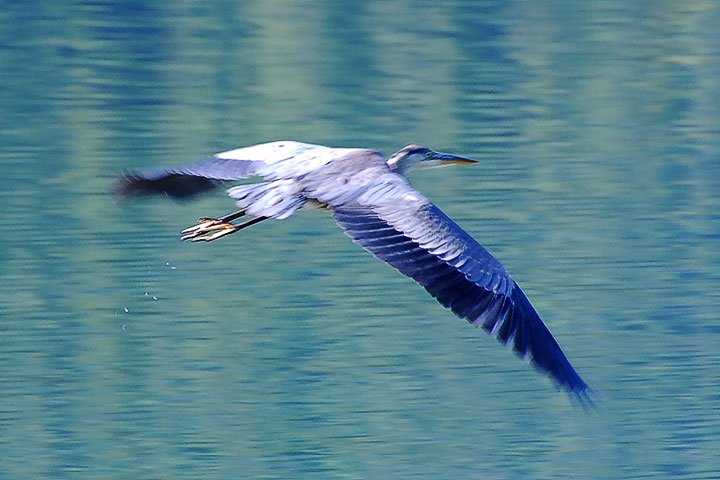 When the wings of the Great Blue Heron are spread in flight, it is clear why the word, blue, is in its name.
When the wings of the Great Blue Heron are spread in flight, it is clear why the word, blue, is in its name.
 When foraging, the heron is usually a solitary bird. I rarely see more than one at a time.
When foraging, the heron is usually a solitary bird. I rarely see more than one at a time.
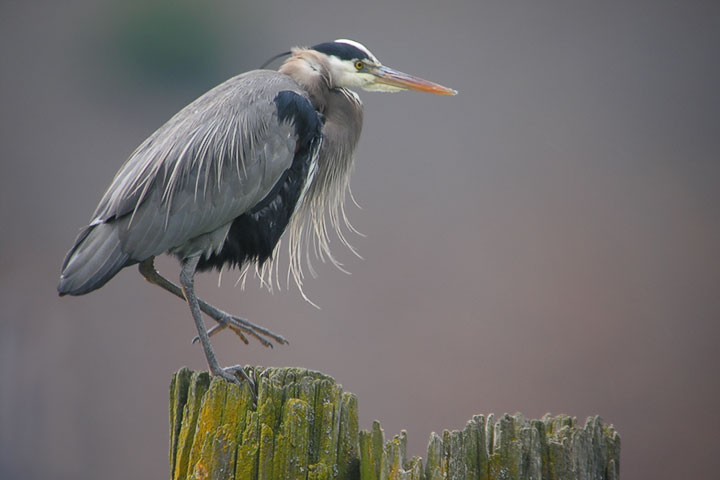 An adult Heron has a shaggy neck, a white crown and face, and black plume extending from behind each eye. This heron is leaning forward as it puts a foot down in preparation to flying away.
An adult Heron has a shaggy neck, a white crown and face, and black plume extending from behind each eye. This heron is leaning forward as it puts a foot down in preparation to flying away.
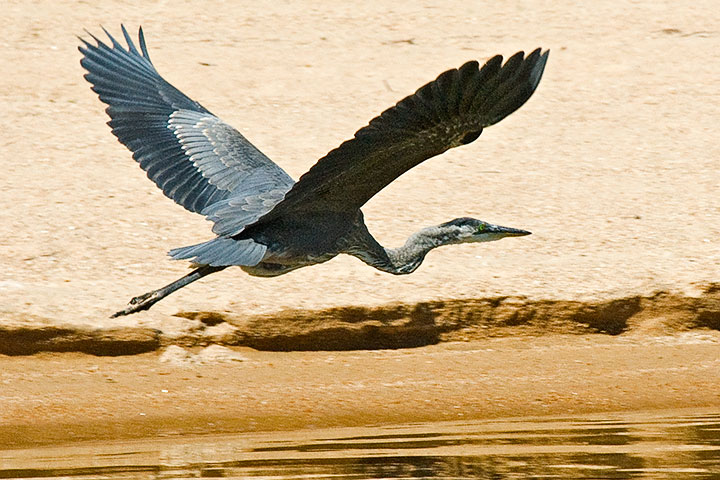 The Heron normally flys with its neck folded in an S and its head tucked back close to its body. But, it doesn’t tuck in its legs.
The Heron normally flys with its neck folded in an S and its head tucked back close to its body. But, it doesn’t tuck in its legs.
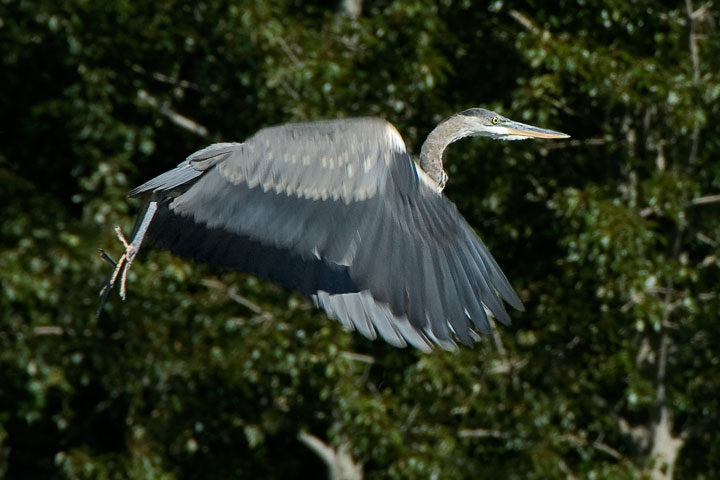 This Heron has just leaped into the air off of a piling.
This Heron has just leaped into the air off of a piling.
 A Heron is lifting itself into the air from the rock jetty at Troup.
A Heron is lifting itself into the air from the rock jetty at Troup.
 A juvenile heron—less than one year old—has a black cap. It also lacks the shaggy neck and black plumes.
A juvenile heron—less than one year old—has a black cap. It also lacks the shaggy neck and black plumes.
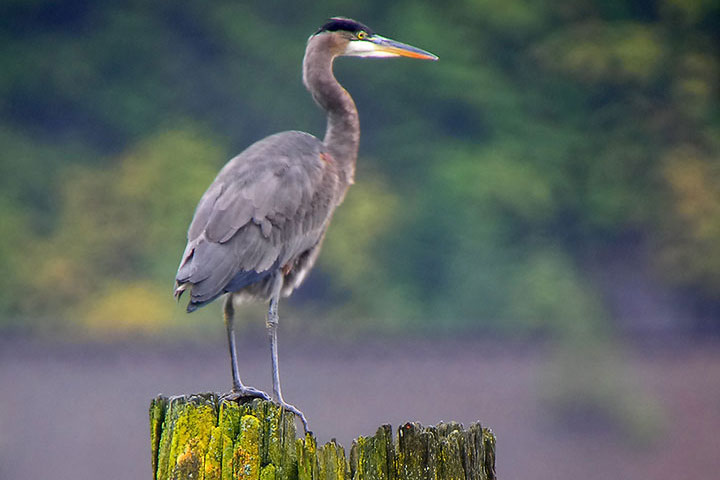 This juvenile Heron is watching for fish.
This juvenile Heron is watching for fish.
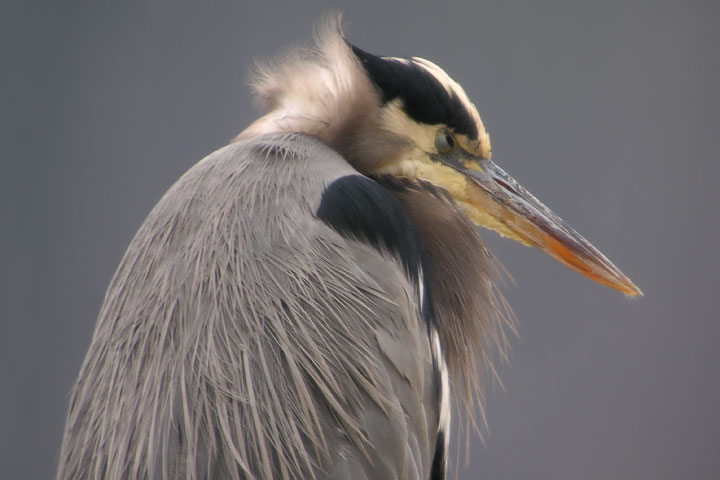 I sympathize with this lad who became irretrievably sleepy while watching for fish. He sat on his watching post, but soon his lids closed. Try as he would to keep his eyes open (first picture), he finally failed; they stayed closed and down went his head (second picture). And that was that: no fish today.
I sympathize with this lad who became irretrievably sleepy while watching for fish. He sat on his watching post, but soon his lids closed. Try as he would to keep his eyes open (first picture), he finally failed; they stayed closed and down went his head (second picture). And that was that: no fish today.
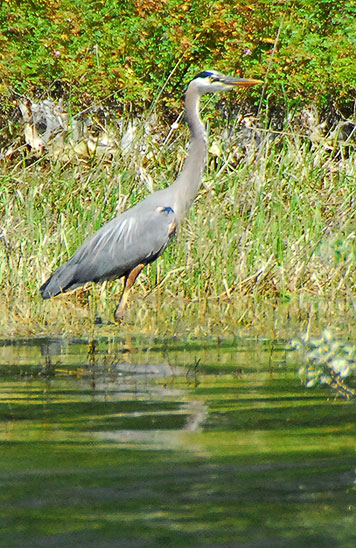 This heron is in the shallows near the mouth of Kokanee Creek.
This heron is in the shallows near the mouth of Kokanee Creek.
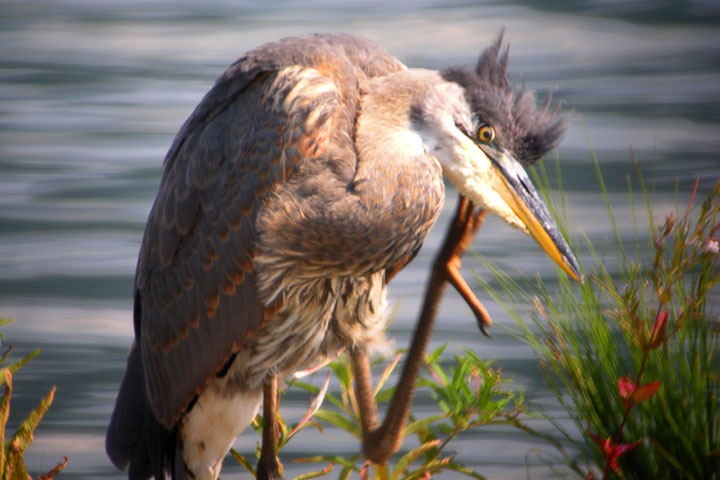 When you have to scratch; you have to scratch.
When you have to scratch; you have to scratch.
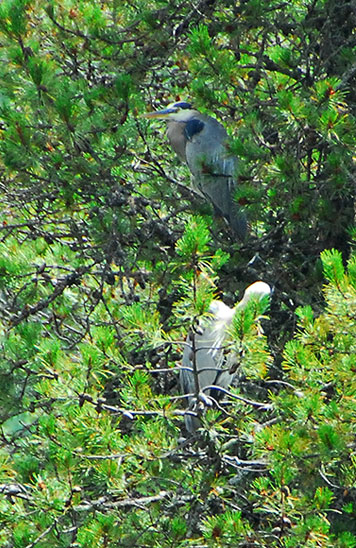 Two of a half-dozen herons roosting in the trees on Harlequin Island along the West Arm.
Two of a half-dozen herons roosting in the trees on Harlequin Island along the West Arm.
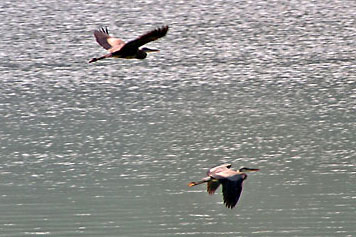 In flight, the Heron has slow steady beats. The wings on the left heron are on the downstroke; while those in the right heron are on the upstroke.
In flight, the Heron has slow steady beats. The wings on the left heron are on the downstroke; while those in the right heron are on the upstroke.
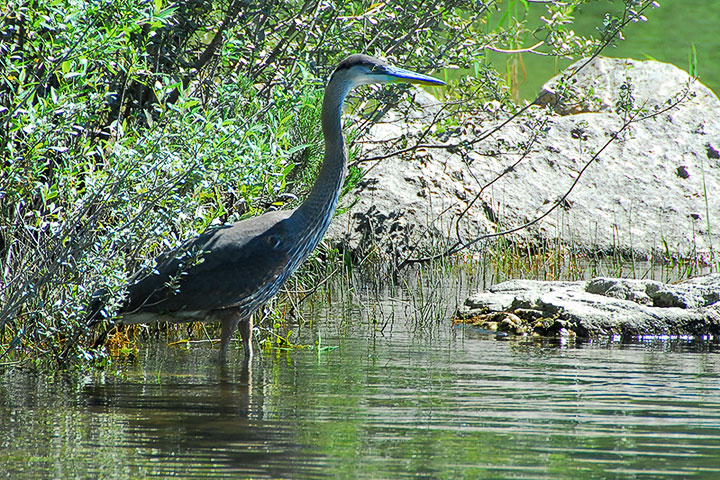 The stately wanderings of the Great Blue Heron is in marked contrast to the frenetic activity of a Killdeer or a Spotted Sandpiper. Also, the heron’s long legs and neck enables it to obtain food in places inaccessible to those smaller wading birds.
The stately wanderings of the Great Blue Heron is in marked contrast to the frenetic activity of a Killdeer or a Spotted Sandpiper. Also, the heron’s long legs and neck enables it to obtain food in places inaccessible to those smaller wading birds.
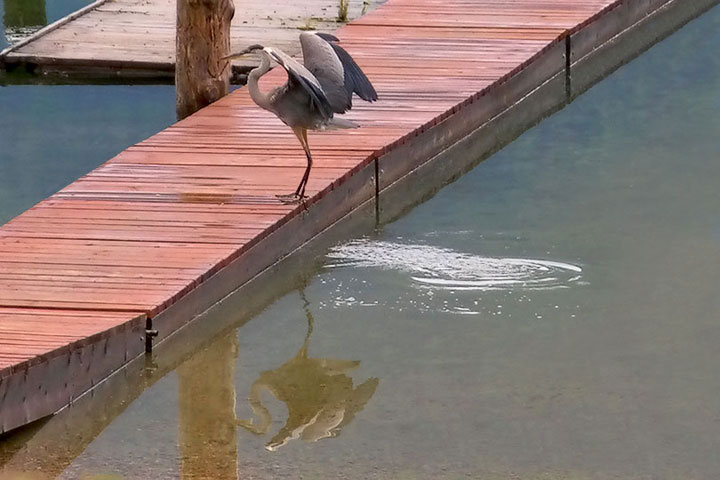 This heron used its wings to lift itself out of the lake and onto the dock. Note the reflection.
This heron used its wings to lift itself out of the lake and onto the dock. Note the reflection.
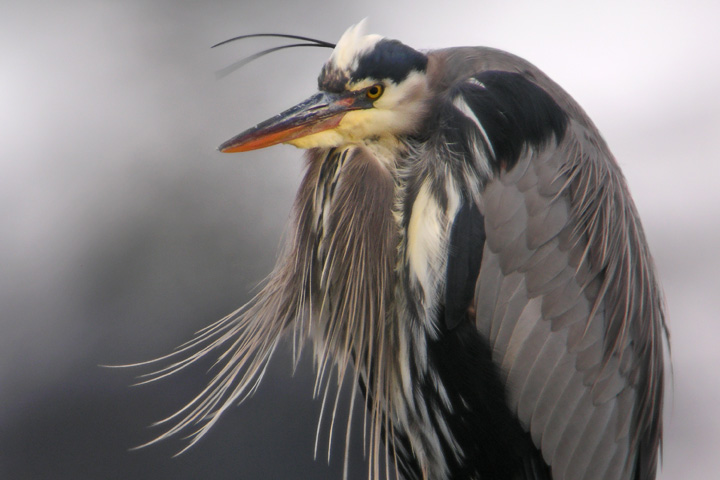 Despite appearances, this heron poses a threat only to small fish.
Despite appearances, this heron poses a threat only to small fish.
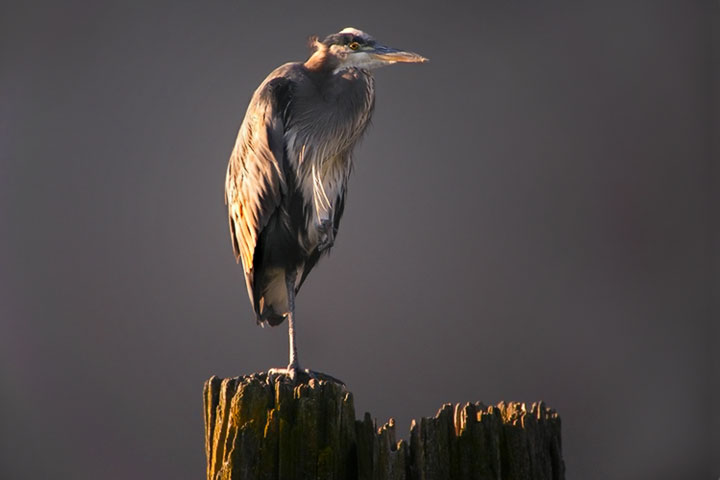 A heron often spends a long time standing on one leg while fishing.
A heron often spends a long time standing on one leg while fishing.
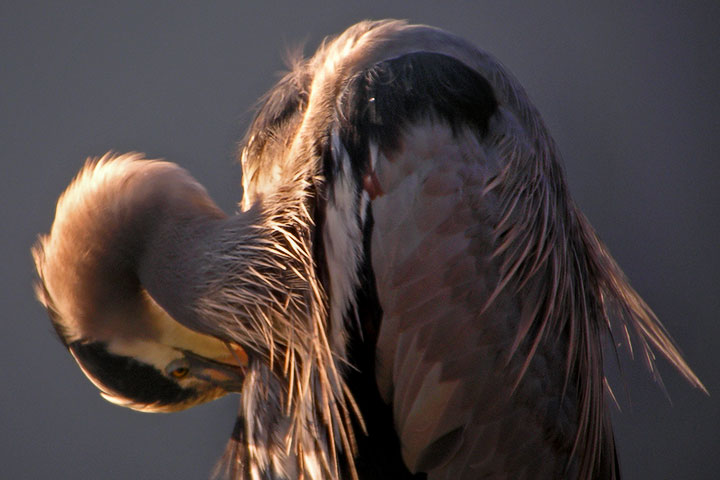 The extreme flexibility of the heron’s neck is seen in this and the picture to the left.
The extreme flexibility of the heron’s neck is seen in this and the picture to the left.
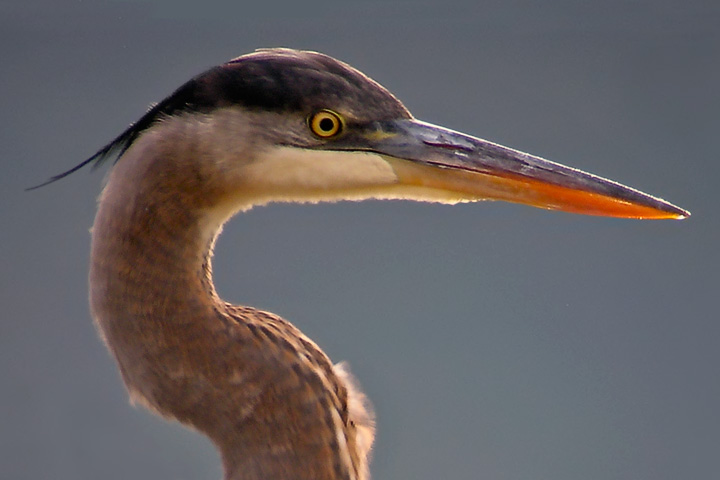 Before I took this picture, my favourite heron shot was the one above where the adult on the piling has one foot raised.
Before I took this picture, my favourite heron shot was the one above where the adult on the piling has one foot raised.
Information from Wikipedia: Great Blue Heron.
![]()